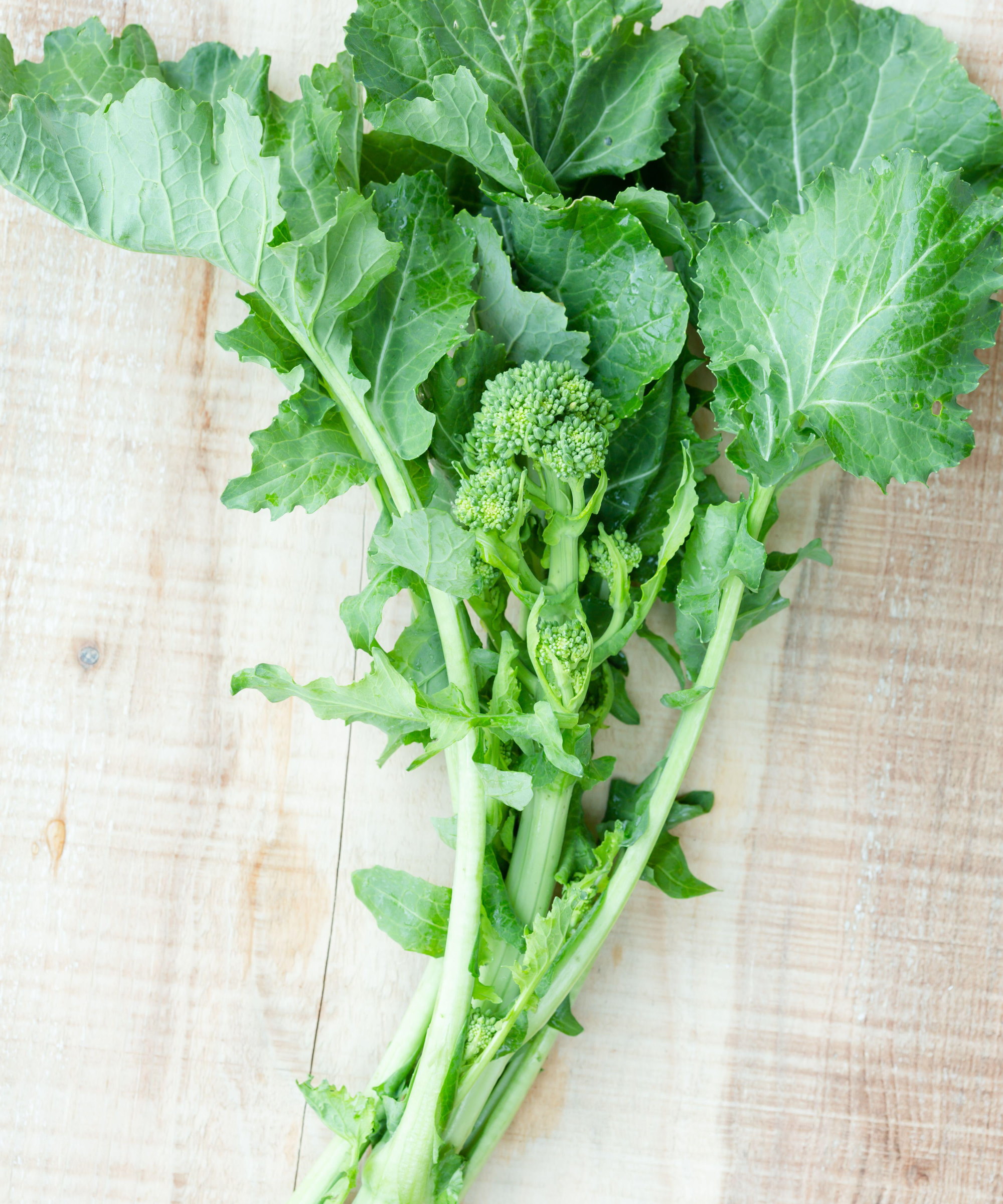When and how to harvest broccoli rabe – top tips to get the timing right for abundant yields
Our guide to broccoli rabe harvesting will help you enjoy multiple pickings from each plant


Broccoli rabe is a little-known leafy crop grown for edible buds and stems that have an earthy and peppery flavor. The crop, also commonly known as rapini, is popular in Southern Italian and other Mediterranean cuisines.
It is a cool-weather crop that quickly grows. The buds, which look similar to small broccoli heads, and stems should be picked at the right time as they are delicious when closed but turn increasingly bitter as they open.
I harvested the crops for chefs and learnt how important it was to harvest broccoli rabe at the perfect time. I also saw how, when harvesting regularly, you can get multiple harvests from each plant.

The buds, stems, and leaves of broccoli rabe are all edible
Our guide to broccoli rabe harvesting
If you are new to this lesser-known vegetable, you could easily wonder - when do you harvest broccoli rabe? It is different to growing broccoli - despite the name - and you do not need to wait as long for a harvest. To help avoid any potential confusion, we look at how and when to harvest broccoli rabe from your vegetable garden.
When to harvest broccoli rabe

Harvest broccoli rabe when the buds are small
Broccoli rabe is a fast-growing vegetable and the harvesting season can start within five or six weeks of sowing the vegetable seeds. It can take as little as 40-90 days to go from sowing to cropping, though the exact time will depend on the variety and the growing conditions.
The time to start harvesting broccoli rabe comes when the plants reach at least 8-12 inches tall. Amy Enfield, senior horticulturist at ScottsMiracle-Gro, recommends harvesting when the flower heads are ‘roughly one-inch wide and just starting to flower’ as letting the plants fully flower would be a harvesting mistake.
Broccoli rabe quickly matures, which makes getting the timing right to harvest important. The right stage to harvest broccoli rabe is when the buds are green, tight, and yet to open. Letting them over-develop, either through age or plants starting to bolt in hot weather, will result in the heads and stems tasting very bitter.
Design expertise in your inbox – from inspiring decorating ideas and beautiful celebrity homes to practical gardening advice and shopping round-ups.
As a cool-weather vegetable, broccoli rabe is a vegetable to plant in spring and late summer. Therefore, it is important to harvest spring-sown broccoli rabe before the temperature rises in summer as the hot weather causes plants to go to flower and seed.

Amy has over 25 years of experience in the garden industry and has been with ScottsMiracle-Gro for 12 years. She has a BS and MS in Horticulture from Michigan State University and a PhD in Plant and Environmental Sciences from Clemson University.
How to harvest broccoli rabe

Broccoli rabe plants can be harvested multiple times
Broccoli rabe harvesting is very simple and multiple croppings from each plant are easily doable if you harvest correctly. That includes harvesting at the ideal time and always using clean and sharp pruning shears or a harvesting knife to reduce the risk of spreading diseases around the vegetable garden.
‘For multiple harvests, cutting the main stem may allow the plant to grow side shoots for additional harvests,’ recommends Amy Enfield. ‘For the most tender shoots, harvest early and regularly.’
Once the plant is tall enough to start harvesting, take your sharp cutting tool and cut around 6-8 inches down the length of the stem - making sure to cut to just above a node. Nikola Tomov, a gardening expert at Fantastic Services, advises: ‘Leave a few leaves on the plant; this will help in the formation of more side shoots and thus more yields in the future.’
The plant will quickly regrow and send out side shoots that can be cut for a second harvest. In ideal conditions, it may be possible to get a third harvest by cutting back these side shoots once they reach a usable length.
Broccoli rabe buds, shoots and leaves are best eaten fresh. They can be stored unwashed in a plastic bag in the refrigerator for 3-5 days, or the crop can be blanched and frozen to be kept for up to a year.
FAQs
Can you eat broccoli rabe after it flowers?
Broccoli rabe is still edible after it flowers, however, the crop develops a very bitter taste once it starts to flower. The flowers themselves are edible, but they have a sharp and bitter flavor and the nutritional value drops once the plant bolts.
Can you eat broccoli rabe leaves raw?
The leaves, stems, and buds of broccoli rabe can all be eaten raw. The base of the stem is best removed, though, as it can be rather woody. The distinctive sharp and peppery taste of broccoli rabe is more pronounced when eaten raw.
Broccoli rabe is a cool-weather crop suited to sowing in late summer or early fall to provide harvest throughout the colder months. It is a great vegetable to plant in September, along with crops like collard greens, spinach, and turnips that can also be harvested over winter.

Drew has worked as a writer since 2008 and was also a professional gardener for many years. As a trained horticulturist, he worked in prestigious historic gardens, including Hanbury Hall and the world-famous Hidcote Manor Garden. He also spent time as a specialist kitchen gardener at Soho Farmhouse and Netherby Hall, where he grew vegetables, fruit, herbs, and cut flowers for restaurants. Drew has written for numerous print and online publications and is an allotment holder and garden blogger. He is shortlisted for the Digital Gardening Writer of the Year at the 2025 Garden Media Guild Awards.
